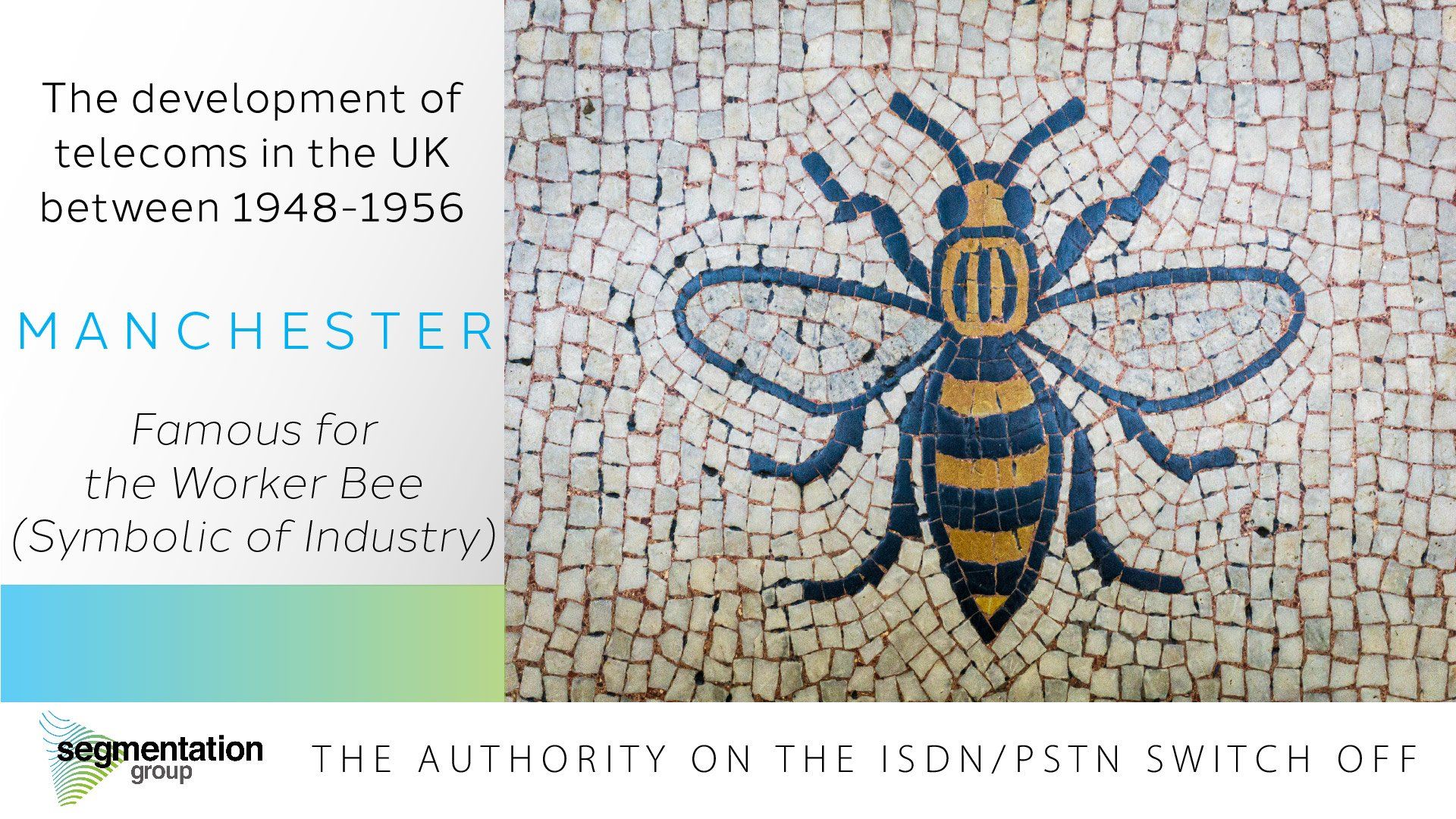The Development of Telecoms - Manchester

Metropolis of the North, hub of the Lancashire textile industry (the largest permanent single export activity in the country) – Manchester. A great inland City, which, by the construction of the 35-mile Ship Canal in 1894, became one of the principal ports of Great Britain. Manchester does not thrive on cotton alone: coal, steel, engineering, chemical and allied industries contribute to make it one of the great workshops of the world.
Apart from the "Manchester Guardian", six national newspapers publish their northern editions in this city and we must mention such other famous institutions as the Halle, the Free Trade Hall, Old Trafford and that playground of the North, Belle Vue.
The Manchester telephone area, with the twin cities of Manchester and Salford as the focal point, covers 822 square miles. Oldham and its mills to the north; Northwich with its vast ICI chemical plant to the south-west; Macclesfield, the silk town due south; to the south-east, over the wild Derbyshire Hills, Buxton Spa and at the bleak north-east tip of the rea, Holme Moss Television Station.
There are 86 exchanges, of which 63 are automatic, serving 234,500 stations, with half a million miles of wire, of which only 35,000 miles is overhead. The total staff (including telephonists) exceeds 4,300 and the annual revenue is £4,000,000.











